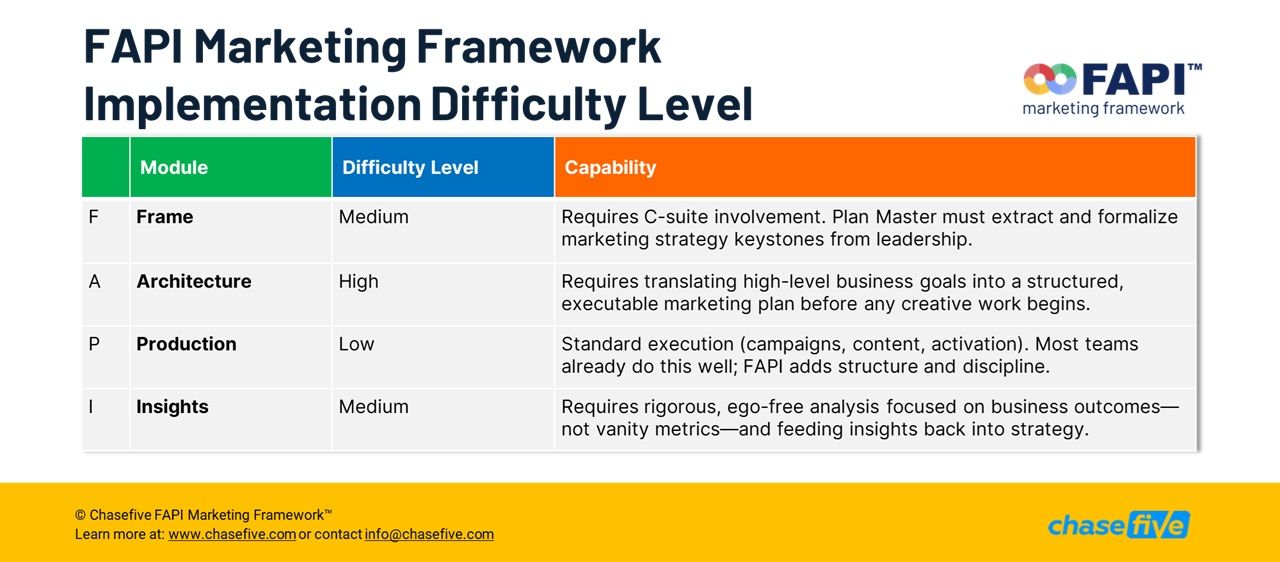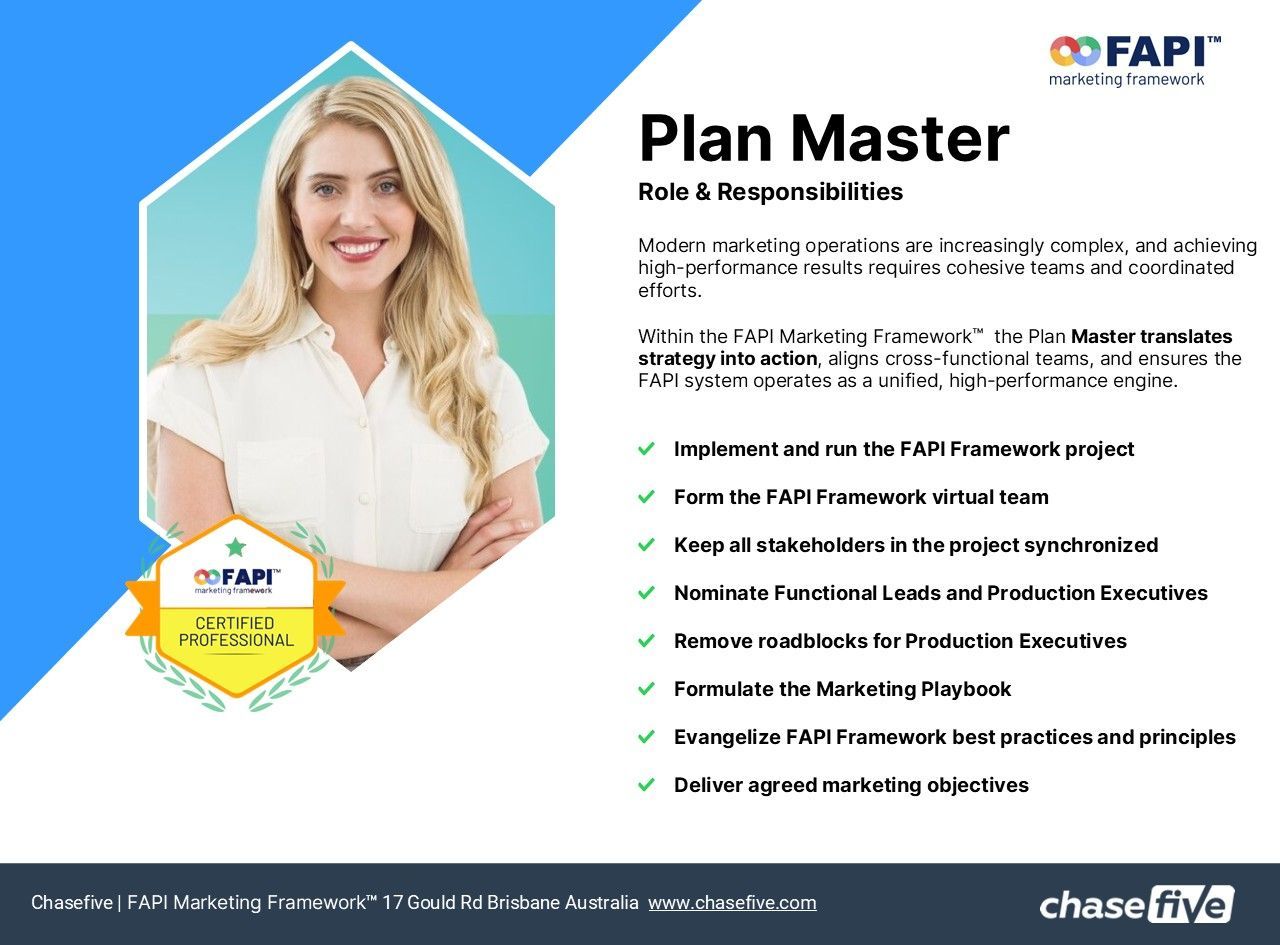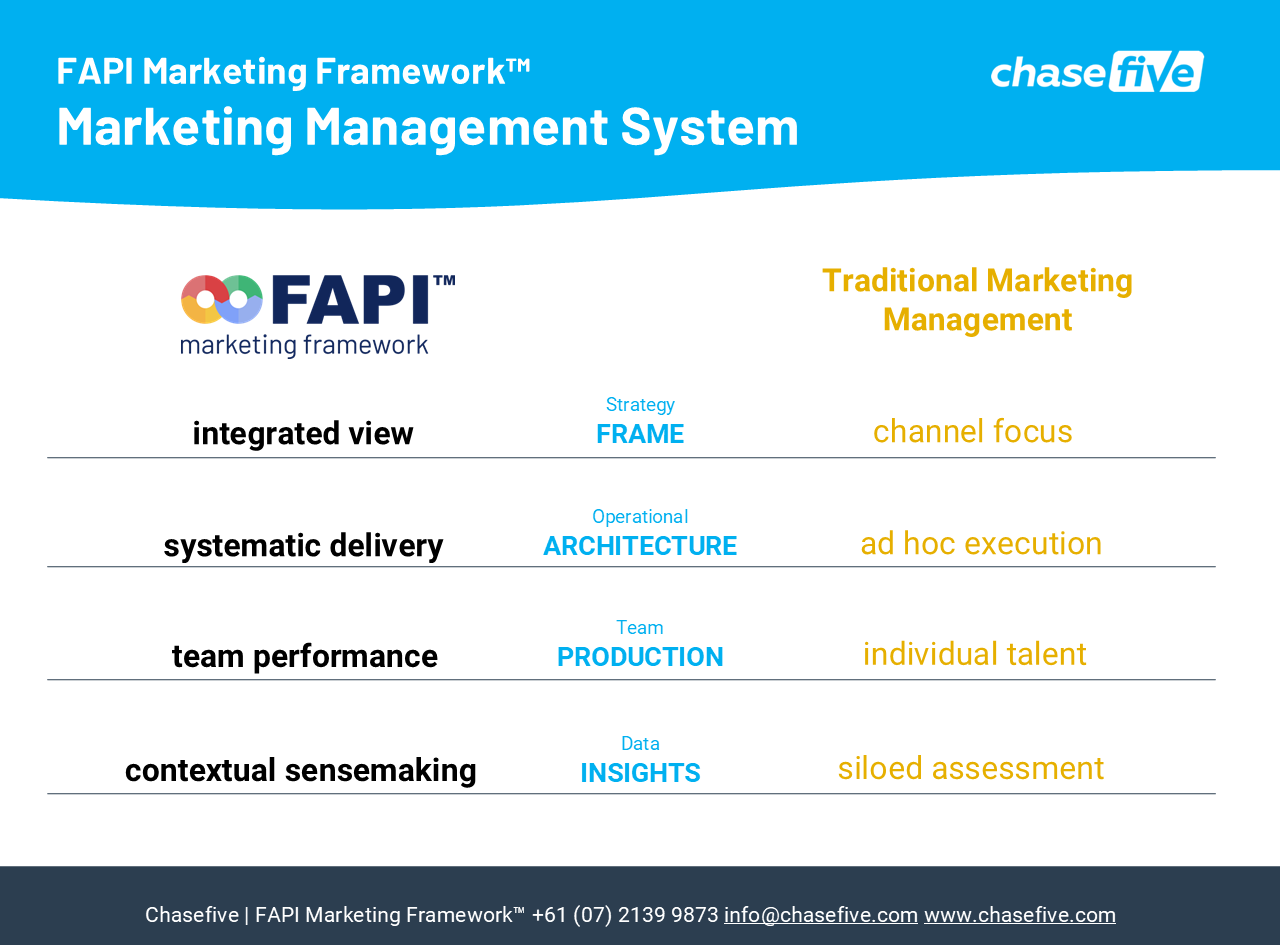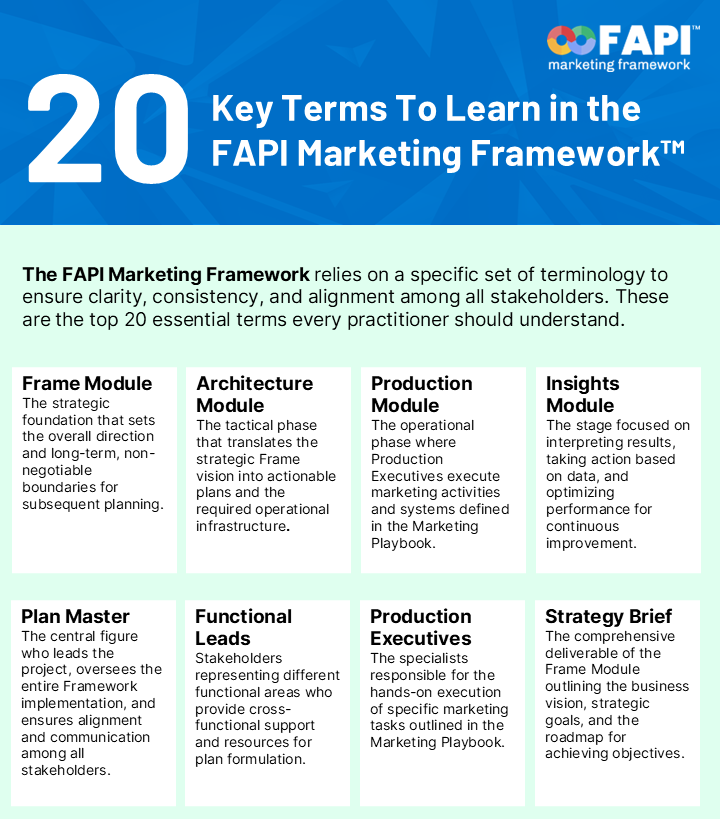Key tenets of the FAPI Marketing Framework: Coherence, Collaboration, and Adaptability.
The FAPI Marketing Framework™ provides a comprehensive approach to building a successful marketing strategy that is rooted in three essential pillars: Coherence, Collaboration, and Adaptability.
These pillars foster a connected process, involve the entire organization from senior management down to production executives, and enable responsiveness to changing circumstances. The framework ensures an effective marketing process through ongoing progress monitoring and outcome evaluation. This means the approach is continuously being assessed and updated to meet the organization's needs and keep up with the changing marketing landscape. By following this comprehensive approach, organizations can build a marketing strategy that is coherent, collaborative, and adaptable, ensuring long-term success and growth.
Cohesive and integrated (connected end-to-end process).
The framework provides the company with a comprehensive structure that covers all aspects of marketing planning, execution, and analysis, ensuring control over the entire marketing process without leaving gaps in the strategy.
A cohesive marketing process guarantees a unified voice and message, building trust and recognition with internal and external stakeholders. It streamlines decision-making, aligns individual actions with marketing goals, and drives efficiency by eliminating redundancy and wasted effort.
Collaborative and coordinated (cross-functional collaboration).
Effective marketing requires the participation of all stakeholders in the business, including Senior Management, Functional Leads, and Production Executives. All team members should have a holistic view of the marketing process and contribute based on their specific functional area.
Cross-functional collaboration sparks innovative ideas and improves agility, allowing teams to respond quickly to market changes and adjust strategies for better results.
Adaptive and metrics-led (recursive and self-correcting).
The FAPI Marketing Framework™ provides a flexible approach that can respond to changes in circumstances, new information, or unexpected events during the marketing planning and management process. The framework continually monitors progress, evaluates outcomes, and adjusts accordingly, making it recursive and self-correcting.
To succeed in today's marketing landscape, adaptability is crucial. This involves adjusting strategies based on new data, trends, and feedback. By embracing agility, the business can seize unexpected opportunities, stay ahead of competitors, and minimize risks to your brand.
The FAPI Marketing Framework™'s emphasis on Coherence, Collaboration, and Adaptability is crucial for building a successful marketing strategy in today's dynamic and competitive landscape.
Sign up to a FAPI Marketing Framework™ workshop at https://www.chasefive.com/fapi-framework








